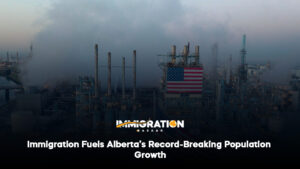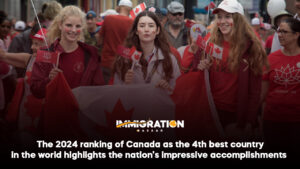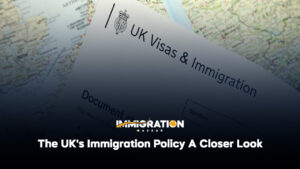Introduction
Canada has long been celebrated for its welcoming stance towards immigrants and international visitors. Known for its diverse culture and inclusive policies, the country has attracted millions seeking new opportunities, whether for work, study, or permanent residency. However, recent reports suggest a significant shift in this narrative. As government data indicates a rise in visa rejections and a more stringent approach to immigration, it raises questions about the future of Canada’s reputation as a hospitable nation.
Current Trends in Visa Rejections
- Statistics on Rejections
Recent statistics reveal a worrying trend in Canada’s immigration landscape. According to data obtained from the Canada Border Services Agency (CBSA), July 2024 saw the rejection of 5,853 foreign travelers, marking the highest monthly figure since January 2019. This increase reflects a broader pattern, with border officers averaging Immigration Bazaar in the first half of 2024—a 20% increase compared to the previous year.
The CBSA has noted that, in July alone, 285 visa-holders were deemed inadmissible, also the highest number recorded since January 2019. These figures suggest a growing reluctance to admit visitors, including students, workers, and tourists, raising concerns among those hoping to travel to Canada.
- Impact on Various Visa Categories
The tightening of visa approvals has affected various categories of visitors:
- Student Visas: Many international students seeking education in Canada may face additional hurdles. The perceived increase in scrutiny could dissuade potential students from applying.
- Work Permits: Foreign workers may also find it more challenging to secure the necessary permits, potentially leading to labor shortages in key sectors.
- Tourist Visas: The increase in refusals for visitor visas suggests that even short-term travelers are encountering difficulties, complicating travel plans for many.
Government Responses and Political Climate
- Political Context
The shift in immigration policy is occurring against a backdrop of political maneuvering. With Prime Minister Justin Trudeau’s Liberal government facing declining popularity ahead of an anticipated election, there is a palpable sense of urgency to address concerns surrounding immigration. Reports indicate that migrants have increasingly been blamed for housing shortages and rising prices, issues that resonate deeply with Canadian voters.
- Public Sentiment
Polls indicate that a growing segment of the Canadian population believes the country is admitting too many immigrants. This sentiment has likely influenced the decision-making processes within immigration and border control agencies. Observers note that these attitudes are filtering down to border and immigration officers, potentially affecting their discretion during the admissions process.
Analysis of the Rejection Patterns
- Increased Scrutiny at the Borders
The rise in rejections may be attributed to several factors:
- Policy Adjustments: Although the CBSA has not publicly identified specific policy changes, the increasing rejection rates suggest a potential tightening of criteria used to assess admissibility.
- Changing Migration Patterns: As Canada becomes a more popular destination, the sheer volume of applicants could overwhelm the system, prompting border officials to exercise greater caution.
- Economic Considerations
With housing shortages and economic pressures at the forefront of public concern, the government may be responding to calls for a more cautious approach to immigration. By reducing the number of temporary residents, officials hope to alleviate some of the pressure on housing markets and public services.
The Path Forward for Applicants
- Adapting to New Realities
For potential applicants, understanding the current landscape is crucial:
- Documentation: Ensuring that all applications are accompanied by thorough and accurate documentation will be more important than ever. Applicants should anticipate more detailed inquiries into their backgrounds and intentions.
- Consultation: Seeking advice from immigration professionals or consultants can provide valuable insights into the application process and help navigate potential obstacles.
- Realistic Expectations
Given the current climate, applicants should maintain realistic expectations about the timelines and likelihood of approval. Being prepared for possible delays or additional scrutiny can help alleviate frustrations during the process.
Conclusion
The recent increase in visa rejections and the shift in Canada’s immigration policies represent a significant change in the country’s approach to foreign visitors and residents. While Canada has long been known for its welcoming attitude, the combination of political pressures, economic concerns, and changing public sentiment may lead to a more restrictive immigration environment.
As prospective travelers and residents navigate this evolving landscape, staying informed and prepared will be key. Monitoring developments and seeking guidance can empower individuals to make informed decisions about their immigration plans.
For those looking to stay updated on global visa issues and immigration policies, resources like Immigration Bazaar will continue to provide accurate and timely information. As Canada faces these challenges, the commitment to embracing newcomers will be tested, and it will be crucial to see how the country adapts to maintain its status as a premier destination for immigrants worldwide.







